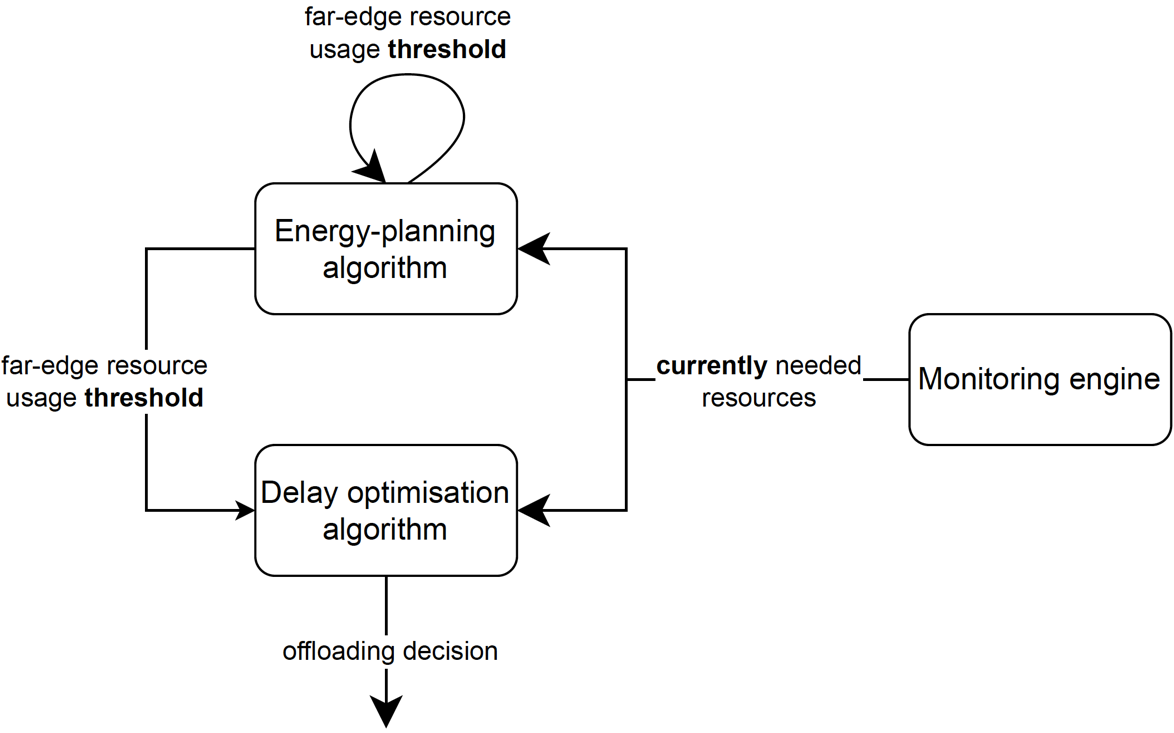Francesco Iadanza, ENG, Estela Carmona Cejudo, i2Cat
Edge computing brings to applications orchestration additional requirements such as local data processing, lower network latency [1] and improved resiliency and autonomy to overcome unattended and disconnected operations [2]. Kubernetes [3] orchestration and its open-source implementations for the edge help to increase the resiliency and autonomy with automatic scaling, self-monitoring and balancing and thousands of production-ready tools and applications.
As anticipated in previous blogpost [4], in Pledger we built a comprehensive solution to offer an end-to-end smart orchestration and monitoring on hybrid edge and cloud infrastructures, where benchmarking and app profiling allow to deal with hardware diversity.
The main scenario explored in Pledger is with limited resources on the edge where different applications might compete to keep computation on the edge to reduce latency. For some domains, like V2X, latency can be critical and pushing resources to far-edge servers located in the proximity of vehicles can greatly reduce end-to-end latency. Instructions and demos are available on the project Gitlab repository [5] and the project YouTube channel [6]. Such list has been now updated to include a scenario which comprises energy considerations on the edge, based on previous ECODA algorithm.
The “ECODA” optimisation [7] achieves a good trade-off between performance and computational complexity, and therefore it can help achieve strict latency requirements of V2X applications in two-tier infrastructures to support edge and cloud.
The original ECODA, however, did not consider energy consumption on the edge neither possible usage of solar power to rechange nodes. So, we prepared a new algorithm named “EA-ECODA” (Energy Aware ECODA) which adds a resource threshold on edge nodes to dynamically limit computation to maximise resource usage and latency, as in ECODA, but also saving some energy depending on the battery level and the solar recharge capabilities so that the expected load on the edge can be managed.
The general idea is described in the picture below.

The scenario explored is with edge nodes serving the enhanced road safety of vulnerable road users (Use Case 2), powered with solar panels and batteries, managing user peaks.
We published a detailed demo video to describe the installation of a test environment and to simulate energy cost (based on CPU load), battery charging rate (based on solar irradiance) and battery level (linearly dependant on energy cost and energy stored) using a spreadsheet where CPU load is shaped as a combination of two Gaussians to simulate expected users’ peaks during rush hours and the battery charging rate is shaped again as a Gaussian curve as shown in the picture below.

Within the demo, the resource threshold on the edge is changed dynamically and so is the ECODA offload plan. For more details, please refer to the demo named “Pledger DSS #13 EA-ECODA optimisation” on Pledger YouTube channel.
The EA-ECODA algorithm will be submitted by the end of September 2022 to IEEE Transactions on Vehicular Technology, a scholarly journal dedicated to vehicular technology, covering topics such as Wireless Networks and Mobile Services, and Connected and Autonomous Vehicles Systems, with impact factor of 6.239 [8], ranked 7th among 288 IEEE journals [9].
[1] Haja, David & Szalay, Mark & Sonkoly, Balázs & Pongracz, Gergely & Toka, László. (2019). Sharpening Kubernetes for the Edge. 136-137. 10.1145/3342280.3342335.
[2] Xiong, Ying & Sun, Yulin & Xing, Li & Huang, Ying. (2018). Extend Cloud to Edge with KubeEdge. 373-377. 10.1109/SEC.2018.00048.
[5] https://gitlab.com/pledger/public/confservicedss/-/tree/master/doc/optimisations
[6] https://gitlab.com/pledger/public/confservicedss/
[7] E. C. Cejudo and M. Shuaib Siddiqui, "An Optimization Framework for Edge-to-Cloud Offloading of Kubernetes Pods in V2X Scenarios," 2021 IEEE Globecom Workshops (GC Wkshps), 2021, pp. 1-6, doi: 10.1109/GCWkshps52748.2021.9682148.
[8] IEEE Transactions on Vehicular Technology, https://ieeexplore.ieee.org/xpl/RecentIssue.jsp?punumber=25 [retrieved date 01/07/2022]
[9] IEEE Transactions on Vehicular Technology, impact factor https://vtsociety.org/publication/ieee-transactions-vehicular-technology [retrieved date 01/07/2022]


